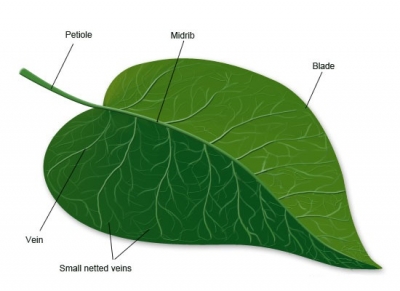
For a pair of untrained eyes, leaves are nothing but a bunch of rustling foliage. However, a closer look will reveal much more than what meets our eyes. For example, in an ordinary rose leaf, the green colour is in fact inside the leaf rather than outside. If we observe it closely, we can perceive that the outer surface is colourless. We might even need a microscope to see this more clearly.
Much like a human or animal body, leaves too have a skin! A thin layer of epidermis, or skin cells, covers the outside of the leaf. Small openings called stomata are present in the lower epidermis, and sometimes in the upper epidermis. Air passes in and out of the leaf through these openings. In plants such as water lilies, all the stomata are in the upper epidermis as the lower epidermis rests on the water.
The opening of each stomata is controlled by two bean-shaped cells called the guard cells. They swell with water during the day and shrink at night.
These guard cells allow air to pass freely in and out of the leaf during the day and at night, when their cell walls straighten, the opening narrow.
There is layer of cells called spongy cells into which the air reaches through the stomata. Above the spongy cells, there are usually one or two rows of palisade cells. These are long, slender cells closely packed together.
Leaves have veins. They usually run through the middle of the leaf, between the spongy and palisade layers. The xylem and phloem tubes, which bring in water and carry away food, are found in the veins.
The spongy and palisade cells contain chlorophyll. This vital substance is located in hundreds of microscopic chloroplasts, or ‘green bodies.’ There are a few chloroplasts in the guard cells too.
Picture Credit : Google

